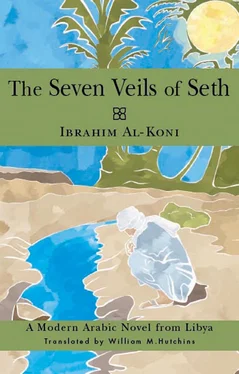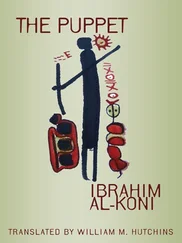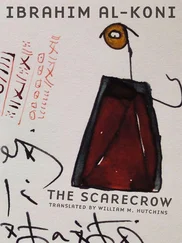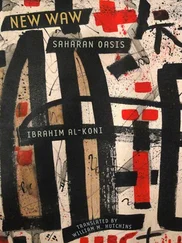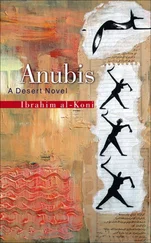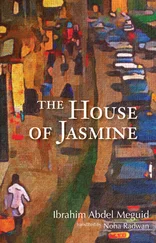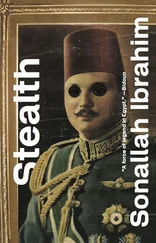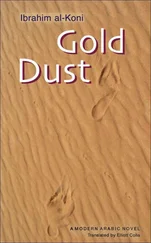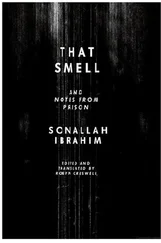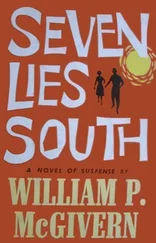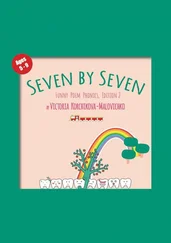Ibrahim al-Koni
Seven Veils of Seth
In the ancient Egyptian religion, Seth is the evil god who out of jealousy slays his brother Osiris, the good god of agriculture, to seize the throne. Isis, the goddess wife of Osiris, then searches everywhere to recover the pieces of her husband’s body and secretly raises their son Horus, who eventually challenges his uncle. Seth is, however, also the god of the desert and therefore a benevolent champion of desert dwellers like the traditionally nomadic Kel Tamasheq, better known as the Tuareg. The world-renowned, Libyan, Tuareg author Ibrahim al-Koni, who writes in Arabic, has drawn on the tension between these two opposing visions of Seth to create a novel that also provides a vivid account of daily life in a Tuareg oasis.
Isan, the protagonist of The Seven Veils of Seth , is either Seth himself or a latter-day avatar. A desert-wandering seer and proponent of desert life, he settles for an extended stay in a fertile oasis, where he adopts a tomb’s vault as his domicile. If Jack Frost, the personification of the arrival of winter, were to visit a tropical rain forest, the results might be similarly disastrous. Isan first upsets the good citizens of the oasis by substituting a she-ass for the usual camel as his mode of transport and by rejecting their offers of hospitality. He is surprised bathing naked, without even his typical Tuareg man’s veil, in the spring-fed pond that serves the oasis, by six young beauties, each the spouse or sweetheart of a local notable. These six belles both captivate and infuriate him, and he swears revenge. Not surprisingly, since this is a novel by Ibrahim al-Koni, infanticide, uxoricide, serial adultery, betrayal, metamorphosis, murder by a proxy animal, ordinary murder, and a life-threatening chase through the desert all figure in the plot, although the novel is also an existential reflection on the purpose of human life.
If Isan, alias Seth, is a demonic antihero, his two main antagonists are the chief of the oasis (and, so, arguably Osiris) and a younger man who plays the fool, the village idiot. He resembles Horus and Jesus. The idiot is not Prince Myshkin in Dostoevsky’s The Idiot , Satanic Isan is not Dostoevsky’s killer Rogozhin, and the novel’s climactic murder does not duplicate that of The Idiot , but there are enough similarities between the two novels to add a level of meaning. Another Russian novel that may serve as a reference point for The Seven Veils of Seth is Mikhail Artsybashev’s Sanin , in which the plot is also driven by the arrival of a Satanic outsider, in this case Sanin, in a relatively harmonious, provincial community. Nicholas Luker says, “ Sanin rests on its hero’s unexpected arrival and departure. . We may even conclude that the name Sanin suggests Satanin. . and thus Satan himself.” 2Luker also remarks on “Sanin’s uninhibited sexual behavior. . ” It becomes clear in The Seven Veils of Seth that the desert god of sterility also takes a personal interest in fertility.
Ibrahim al-Koni typically layers allusions in his works as if he were an artist adding a suggestion of depth to a painting by applying extra washes. Tuareg folklore, Egyptian mythology, Russian literature, and medieval European thought elbow each other for room on the page. One might expect a novel called The Seven Veils of Seth to be a heavy-handed allegory. Instead, the reader is left wondering. The truth is elusive, a mirage pulsing at the horizon.
Nomadic pastoralism has been part of the self-definition of the Kel Tamsheq or Tuareg people for at least two thousand years but has been threatened for the last fifty years by diverse forces including severe and extended droughts, the rise of national governments that wish to define national borders and to impose public education on all children, the over-grazing of goats, the abolition of slavery, television, and globalization. The call of the nomadic life — of a life of endless existential quest — is a central issue of The Seven Veils of Seth and of the companion novel Anubis , although al-Koni makes it clear that many nomads live in cities today and work for multinational corporations, which transfer them from state to state or country to country. Personal growth through destabilization is the goal that the benevolent side of Seth encourages, not simply a return to the good old days of Saharan camel caravans, which were an innovation in their time. A second major issue in The Seven Veils of Seth is the curious interplay that one finds in daily life between good and evil. If someone who hates you saves your life, should you be grateful? Is it fair to use data collected when someone did you a favor to lobby against him later in an unrelated case? If God is so good as to bring good even out of evil, should we thank God for Satanic demons like Seth?
Although al-Koni’s novels Anubis, The Seven Veils of Seth , and Lawn al-La‘na (The Color of the Curse), which were published in Arabic in this sequence, do not constitute a trilogy, each is an inquiry into the overlap in human existence between good and evil. In The Seven Veils of Seth , the hero is described as a mirror that shows a malevolent face to a bad person and a benevolent one to a good fellow. In Lawn al-La‘na , the protagonist is such a troubled and thoroughly evil character that the interesting ambiguity of the complex interactions of good and evil in the two previous novels is lost. Read as a series, though, the three novels make it clear that al-Koni is exploring aspects of human nature and not launching into some reprise of Pharaonic culture.
The author asked the translator to use an alternative title ( The Seven Veils of Seth ) in place of an English translation of the original Arabic title al-Bahth ‘An al-Makan al-Da’i‘ , (translated on the Arabic text’s cover in English as In Search of the Lost Place ). The author has explained to the translator that the Arabic title was a reference to A la recherche du temps perdu by Marcel Proust. The quest for the lost paradise of the oasis Waw is a frequent theme of works by al-Koni, including this novel. An alternative title for this novel in English then would be “Paradise Lost.” Here the Satanic Seth attempts to help us oasis-dwellers find our way back to Eden. Or, does he?
William M. Hutchins
Ibrahim al-Koni, winner of the 2005 Mohamed Zafzaf Award for the Arabic Novel and the 2008 Shaikh Zayed Book Prize, was born in Libya in 1948. A Tuareg who writes in Arabic, he spent his childhood in the desert and learned to read and write Arabic when he was twelve. After working for the Libyan newspapers Fazzan and al-Thawra , he studied comparative literature at the Gorky Institute in Moscow, where he also worked as a journalist. In Warsaw he edited a Polishlanguage periodical as-Sadaqa , which published translations of short stories from Arabic, including some of his own. Since 1993 he has lived in Switzerland. Of his sixty works, his novels The Bleeding of the Stone, Anubis , and Gold Dust have been published in English translation. At least six of his titles have appeared in French, and at least ten are available in German translation. Representative works by al-Koni are available in approximately thirty-five languages, including Japanese.
Juan Goytisolo in Le Nouvel Observateur (September 9, 1998) referred to Ibrahim al-Koni as a great artist whose works deserve to be known by European readers and remarked on the inexorable way that his characters move from bad to worse, since the final disaster comes as a surprise that seems in retrospect inevitable. Jean-Pierre Péroncel-Hugoz in a review in Le Monde (11 October 2002) greeted the release in French translation of L’Oasis cachée with praise for the universal significance of a work truly presaging the emergence of Arabic literature from its “Oriental rut.”
Читать дальше
